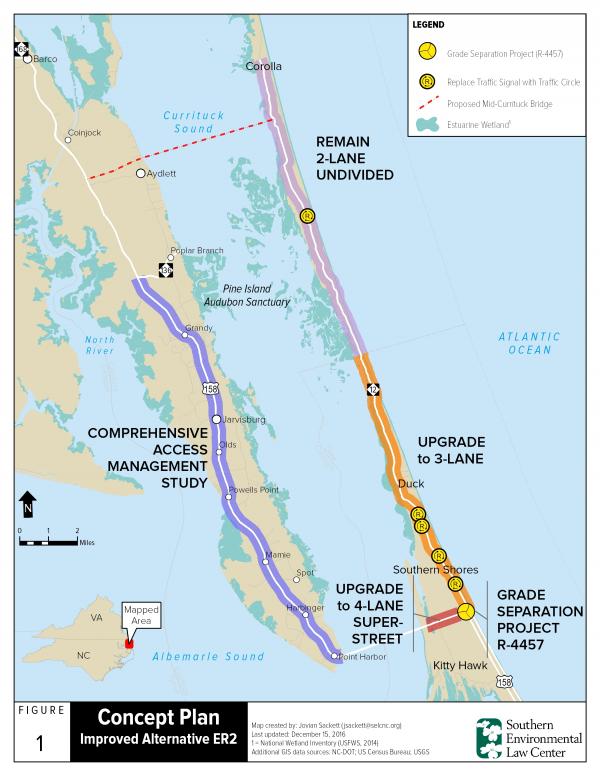Local residents, hunters, fishermen outraged by approval of $500M N.C. bridge
Local residents from the Currituck mainland and the nearby northern Outer Banks—along with hunters, fishermen, and wildlife enthusiasts from the North Carolina Wildlife Federation—reacted with dismay when the North Carolina Department of Transportation (NCDOT) announced late Friday that it had signed a legal approval for the $500 million Mid-Currituck Bridge. SELC represents the groups and has written multiple letters over the years calling into question the need for the bridge and the adequacy of the agencies’ environmental review for the project.
The $500 million proposed bridge would stretch from Aydlett on the Currituck mainland across the environmentally-sensitive Currituck Sound to Corolla on the Outer Banks. The bridge would lead to growth in undisturbed areas along the Northern Outer Banks, as well as increased pollution, thus harming important wildlife habitat in the area. The highly controversial bridge has failed to gain necessary legal approvals to move forward for the past 40 years. It would cause significant damage to the Currituck Sound, and its pricey tolls—by some estimates up to $50 during peak summer months—render the project only usable by wealthy tourists.
Despite receiving this approval from the Federal Highway Administration, NCDOT has been unable to present a viable financial plan to pay for the bridge. The new document shows that NCDOT predicts a drop in long-term traffic expectations, calling into question the agency’s claimed need for the bridge. Less traffic would also mean less toll revenue going toward the cost of the bridge. As a result, the bridge may consume all state transportation funding for North Carolina’s Northern coastal region for years to come.
“Approval of this expensive bridge is particularly disappointing in light of Governor Cooper’s recent statements and executive order noting the importance of resiliency in the face of climate change,” said SELC Attorney Kym Hunter. “Not only will this bridge encourage more development in a stretch of North Carolina that will soon be underwater, but it diverts funding away from other needed road improvements in coastal North Carolina that are increasingly vulnerable to flooding.”
The groups are particularly concerned with the lack of transparency surrounding the approval process. There has been no public analysis of the bridge and no opportunity for the public to weigh in on options since 2012. Despite the significant changes and new information that has come to light in the intervening years, NCDOT has chosen to avoid a public process and engage in closed-door decision-making instead.
Among the new information NCDOT has ignored is a study, presented by the groups last year, looking at a suite of less costly alternative transportation solutions for the Northern Outer Banks. The proposal includes minimal road widening along key congested stretches of NC 12, a redesigned interchange between NC 12 and 158, and the conversion of signalized intersections to roundabouts, as well as programs designed to reduce transportation demand, such as incentives for staggered check-out days at vacation rental homes, and an “electronic key” program that would eliminate unnecessary trips to centralized vacation rental offices.
The alternative solution was designed to ease peak congestion days, which occur primarily on summer weekends, at drastically less cost to taxpayers and the environment than the proposed bridge. The approach also could be implemented much sooner than the proposed bridge.
SELC is currently reviewing the NCDOT’s approval documents and coordinating with its clients about next steps.

